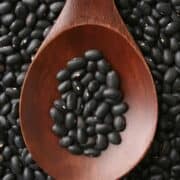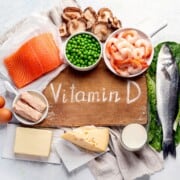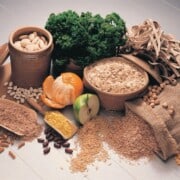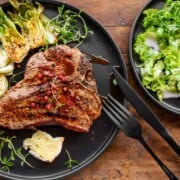
These keto flu tips and tricks will help you make it through that first week's transition from the standard American diet to a much healthier low-carb or ketogenic diet.
Whether you’re embarking on a keto journey as part of a weight-loss mission, to try to reverse diabetes, or simply to recharge your health, scientific research into the ketogenic diet is just beginning to show all the benefits it has for the human body.
But, as with all the good things in life, there’s always something less-than-good to balance it out, and oftentimes, those making the change to the keto diet will experience the keto flu, or a whole host of flu-like symptoms, that while typically short-lived, can leave you feeling pretty out of sorts. We’ve taken a look at why this all happens, what you can expect, and proactive tips and tricks you can use to lessen the severity and duration of the keto flu.
What Is the ‘Keto Flu’?
Well, despite its name, the keto flu is not an actual illness, but rather it’s a term used to describe a constellation of symptoms that many people experience when first starting a low-carb, high-fat ketogenic diet that shifts their bodies into a state of ketosis.
These symptoms can include any or all of the following:
- Headaches
- Fatigue
- Dizziness
- Sore muscles and cramping
- Irritability, mood swings, depression and cravings
- Difficulty focusing and brain fog
- Stomach pain and constipation
- Nausea
- Halitosis (bad breath)
- Insomnia or sleep disruptions
When shifting to the keto diet, your body is undergoing a metabolic shift from using dietary carbohydrates as energy to using stored fat reserves instead. During this initial week of diet change, the body can experience a number of changes that may contribute to these symptoms, including short-term low blood glucose, cellular dehydration, changes in the balance of water and electrolytes, micronutrient deficiencies and the transformation of the gut microbiota. Any or all of these changes can lead to these flu-like symptoms, that some people prefer to call ‘carbohydrate withdrawal’.
Brain Drain
Even though the brain can utilize both glucose and ketones as a fuel source, there’s scientific evidence that fatty acids are not the brain’s preferred source. (1) Pushing the body and brain to change its fuel source to fatty acids may cause a brief period of lowered activity in the brain and may be the source for some of the defining mental symptoms, including mood changes, dizziness, fatigue and a dip in mental clarity.
Dehydration and Electrolyte Imbalance
Electrolytes are minerals in the body that carry an electric charge and are vital to a number of physiological processes, like aiding muscle contraction and regulating heart rate and blood pressure. These minerals include calcium, potassium, magnesium, chloride and sodium. Along with electrolytes, the kidneys play a crucial role in keeping the body hydrated, and oftentimes, dietary changes can throw this whole process out of whack.
Insulin is a hormone that plays a role in regulating blood glucose levels and in regulating the amount of sodium that is reabsorbed by the kidneys. When insulin levels are high, the kidneys reabsorb more sodium and water, but when insulin levels are low, the kidneys excrete more sodium and water. On the ketogenic diet, insulin levels fall and kidneys start to excrete more water and electrolytes, which can contribute to dehydration.
In addition to that, the stored form of glucose, called glycogen, is actually responsible for binding to and retaining water in the body. The reduction of carbohydrates in the diet leads to a short-term reduction of glycogen stores that both accounts for the loss of ‘water weight’ in the early stages of the diet and those shifts in electrolytes that can lead to dehydration, muscle cramps, headaches and constipation. An important thing to note is that it’s all temporary. In the long term, keto-adapted individuals do not have fewer glycogen stores than those who regularly consume carbohydrates. (2)
Sugar Withdrawal
A number of studies have found that sugar affects the brain the same way that addictive substances such as nicotine, cocaine, and morphine do. With the average American consuming 22 to 30 teaspoons a day — considerably more than the recommended maximum of 6 teaspoons — some withdrawal symptoms are to be expected. (3)
Mental Symptoms
Sugar detox can cause a number of emotional and mental symptoms. These include:
- Depression. Feeling down is a common sugar withdrawal symptom. Along with low mood, you may also notice a lack of enjoyment in things you once found pleasurable.
- Anxiety. Feelings of anxiousness may also be accompanied by nervousness, restlessness, and irritability. You may feel like you have less patience than usual and are on edge.
- Changes in sleep patterns. Some people experience changes in their sleep when detoxing from sugar. You might find it hard to fall asleep or stay asleep through the night.
- Cognitive issues. You may find it difficult to concentrate when you quit sugar. This can cause you to forget things and make it hard to focus on tasks, such as work or school.
- Cravings. Along with craving sugar, you may find yourself craving other foods, such as carbohydrates like bread, pasta, and potato chips.
Physical Symptoms
Headache is one of the most common side effects of sugar detox, along with feeling physically rundown. Other possible physical withdrawal symptoms include:
- light-headedness and dizziness
- nausea
- tingling
- fatigue
Opioid Withdrawal
Gluten can be degraded into several morphine-like substances, named gluten exorphins. These compounds have proven opioid effects and could mask the deleterious effects of gluten protein on gastrointestinal lining and function. (4)
Since gluten exorphins bind to opioid receptors in the brain, when you cut it out of your diet, you experience the same opioid withdrawal symptoms you would with any other opioid substance.
Early symptoms of withdrawal include:
- Agitation
- Anxiety
- Muscle aches
- Increased tearing
- Insomnia
- Runny nose
- Sweating
- Yawning
Late symptoms of withdrawal include:
- Abdominal cramping
- Diarrhea
- Dilated pupils
- Goose bumps
- Nausea
- Vomiting
The Good Ol’ Gut
More pronounced in those going from the Standard American Diet straight to a ketogenic diet, the start of a low-carb high-fat diet will cause a number of changes in the gut microbiota, the microorganisms that are responsible for healthy (or unhealthy) digestion and play a significant role in nutrient and drug metabolism, the structural integrity of the gut mucosal barrier, immunomodulation, and protection from pathogens. (5) These changes, though positive in the long-run, may contribute to stomach discomfort, constipation, loose stools, and fatigue from sluggish digestion.
The most important thing to remember if you are committed to giving the keto diet a shot is that all of these symptoms are a part of the process and they will improve in time.
Keto Flu Tips & Tricks
Even if all the symptoms will pass typically after the first week, no one enjoys feeling miserable, and sometimes the simplest of solutions can yield really positive results. Here are some basic pointers on how to reduce the severity of any keto flu symptoms you experience and how you can push yourself through this initial stage successfully.
Considering all that’s happening in the body, each of these symptoms is likely the result of a natural change. So, let’s take one of the symptoms and break it down a little. Some of the well-known factors that cause constipation, for instance, are a reduction of physical activity, dehydration, and poor intake of dietary fibers and carbohydrates.
Since the keto diet specifically restricts carbs and exacerbates dehydration, it’s pretty clear why many people experience constipation. To combat this symptom, you can make sure you’re doing light exercise, taking care to not over exert yourself, and that you’re focusing on properly hydration. Because the initial drop in insulin can cause an imbalance in your electrolytes, it’s important to increase your salts while following a keto diet. Make sure you’re eating (or drinking) more high-quality unrefined salt and eating foods rich in magnesium and potassium, like avocados, leafy greens and spinach, pumpkin seeds and almonds.
Make sure to plan ahead and have keto compliant food prepared so you have ready to go options when you don't feel like cooking. You'll be glad you planned ahead when you're in the throws of the keto flu and just want to order a pizza!
These steps are likely to do even more than just help your digestion, as other symptoms may be the result of dehydration. In addition to eating for electrolyte balance, make sure you’re including keto-approved micronutrient-rich foods, including grass-fed meat products, offal, fish, nuts, seeds, and cruciferous and dark green leafy vegetables. Additionally, getting a good night’s sleep each night, practicing meditation, and taking a detoxifying soak in the tub can do wonders for both your physical and mental state.
So to summarize those tips & tricks, remember to:
- Exercise lightly
- Stay hydrated and increase electrolyte intake
- Eat micronutrient rich keto-approved foods
- Get adequate sleep
- Meditate
- Take Epsom salt detox baths
Most importantly, keep your mind focused on your end goal and remember that the keto flu will pass and you can come out of the other side even stronger!
References:
1. Schönfeld P, Reiser G. Why does brain metabolism not favor burning of fatty acids to provide energy? - Reflections on disadvantages of the use of free fatty acids as fuel for brain. J Cereb Blood Flow Metab. 2013 Oct; 33(10): 1493–1499.
2. Volek J, Freidenreich D, Saenz C, Kunces L, Creighton B, Bartley J, et al. Metabolic characteristics of keto-adapted ultra-endurance runners. Metabolism. 2016 March; 65(3): 100-110.
3. Pruimboom, L and de Punder, K. Effect of dietary carbohydrates during hypocaloric treatment of obesity on peripheral thyroid hormone metabolism. J Health Popul Nutr. 2015; 33: 24.
4. 1. By Any Other Name It's Still Sweetener [Internet]. Heart.org. 2020 [cited 20 January 2020]. Available from: http://www.heart.org/HEARTORG/Conditions/More/MyHeartandStrokeNews/By-Any-Other-Name-Its-Still-Sweetener_UCM_437368_Article.jsp#.XDTo4FVKjIU
5. Jandhyala S, Talukdar R, Subramanyam C, Vuyyuru H, Sasikala M, Reddy D. Role of the normal gut microbiota. World J Gastroenterol. 2015 Aug 7; 21(29): 8787–8803.


















Tell Me What You Think